| |||||
| Decades: | |||||
|---|---|---|---|---|---|
| See also: | |||||
This is a list of 1966 events that occurred in the Socialist Republic of Romania.
Contents
- Incumbents
- Events
- March
- June
- July
- August
- October
- Births
- February
- September
- Deaths
- March 2
- August 2
- October 2
- References
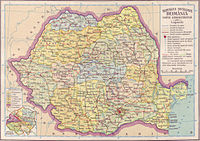
| |||||
| Decades: | |||||
|---|---|---|---|---|---|
| See also: | |||||
This is a list of 1966 events that occurred in the Socialist Republic of Romania.


Bucharest is the capital and largest city of Romania. The metropolis stands on the River Dâmbovița in south-eastern Romania. Its population is officially estimated at 1.76 million residents within a greater metropolitan area of 2.3 million residents, which makes Bucharest the 8th most-populous city in the European Union. The city area measures 240 km2 and comprises 6 districts (Sectoare), while the metropolitan area covers 1,811 km2. Bucharest is a beta global city, a major cultural, political and economic hub, and the country's seat of government.
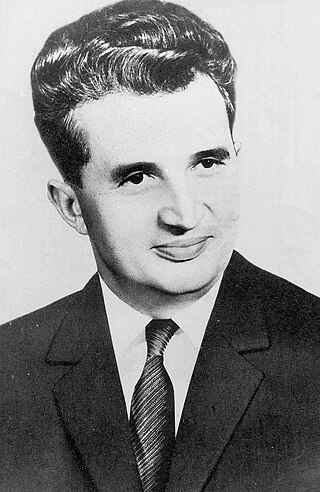
Nicolae Ceaușescu was a Romanian communist politician who served as the general secretary of the Romanian Communist Party from 1965 to 1989. He was the second and last communist leader of Romania. He was also the country's head of state from 1967 to 1989, and widely classified as a dictator, serving as President of the State Council and from 1974 concurrently as President of the Republic, until his overthrow and execution in the Romanian Revolution in December 1989, part of a series of anti-communist uprisings in Eastern Europe that year.

The Socialist Republic of Romania was a Marxist–Leninist one-party socialist state that existed officially in Romania from 1947 to 1989. From 1947 to 1965, the state was known as the Romanian People's Republic. The country was an Eastern Bloc state and a member of the Warsaw Pact with a dominant role for the Romanian Communist Party enshrined in its constitutions. Geographically, RSR was bordered by the Black Sea to the east, the Soviet Union to the north and east, Hungary and Yugoslavia to the west, and Bulgaria to the south.
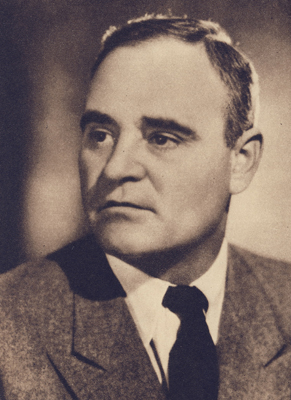
Gheorghe Gheorghiu-Dej was a Romanian politician and electrician. He was the first Communist leader of Romania from 1947 to 1965, serving as first secretary of the Romanian Communist Party from 1944 to 1954 and from 1955 to 1965, and as the first Communist Prime Minister of Romania from 1952 to 1955.

The University of Bucharest (UB) is a public research university in Bucharest, Romania. It was founded in its current form on 4 July 1864 by a decree of Prince Alexandru Ioan Cuza to convert the former Princely Academy into the current University of Bucharest, making it one of the oldest Romanian universities. It is one of the five members of the Universitaria Consortium.
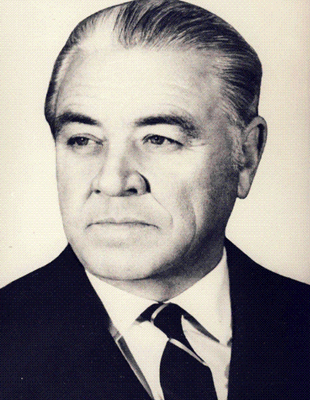
Ion Gheorghe Iosif Maurer was a Romanian communist politician and lawyer, and the 49th Prime Minister of Romania. He is the longest serving Prime Minister in the history of Romania.

The Romanian Communist Party was a communist party in Romania. The successor to the pro-Bolshevik wing of the Socialist Party of Romania, it gave an ideological endorsement to a communist revolution that would replace the social system of the Kingdom of Romania. After being outlawed in 1924, the PCR remained a minor and illegal grouping for much of the interwar period and submitted to direct Comintern control. During the 1920s and the 1930s, most of its activists were imprisoned or took refuge in the Soviet Union, which led to the creation of competing factions that sometimes came into open conflict. That did not prevent the party from participating in the political life of the country through various front organizations, most notably the Peasant Workers' Bloc. During the mid-1930s, due to the purges against the Iron Guard, the party was on the road to achieving power, but the dictatorship of king Carol II crushed this. In 1934–1936, PCR reformed itself in the mainland of Romania properly, with foreign observers predicting a possible communist takeover in Romania. The party emerged as a powerful actor on the Romanian political scene in August 1944, when it became involved in the royal coup that toppled the pro-Nazi government of Ion Antonescu. With support from Soviet occupational forces, the PCR pressured King Michael I into abdicating, and it established the Romanian People's Republic in December 1947.

Grigore Preoteasa was a Romanian communist activist, journalist and politician, who served as Communist Romania's Minister of Foreign Affairs between October 4, 1955, and the time of his death.
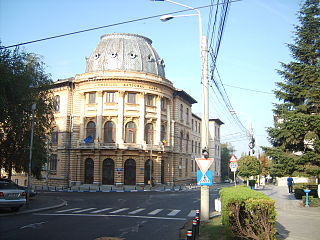
The Carol I National College is a high school located in central Craiova, Romania, on Ioan Maiorescu Street. It is one of the most prestigious secondary education institutions in Romania. Between 1947 and 1997 it operated under the name of Nicolae Bălcescu High School.
Romanian architecture is very diverse, including medieval, pre-World War I, interwar, postwar, and contemporary 21st century architecture. In Romania, there are also regional differences with regard to architectural styles. Architecture, as the rest of the arts, was highly influenced by the socio-economic context and by the historical situation. For example, during the reign of King Carol I (1866–1914), Romania was in a continuous state of reorganization and modernization. In consequence, most of the architecture was designed by architects trained in Western European academies, particularly the École des Beaux-Arts, and a big part of the downtowns of the Romanian Old Kingdom were built during this period.

Indonesia and Romania established diplomatic relations on 20 February 1950, two days following Romania's recognition of Indonesian sovereignity in 18 February 1950. Indonesia and Romania have agreed to enhance cooperation in the trade sector. The nations are expecting the other to be the gate to enter each regional market: Indonesia as the gate to enter the ASEAN market and Romania as the gate to enter the European Union's. Indonesia has an embassy in Bucharest and Romania has an embassy in Jakarta.
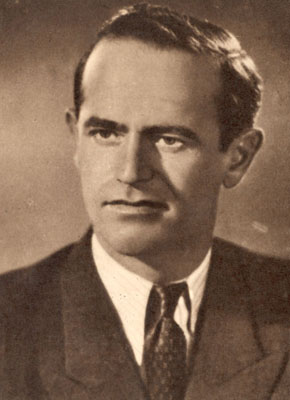
Alexandru Moghioroș was a Romanian communist activist and politician.
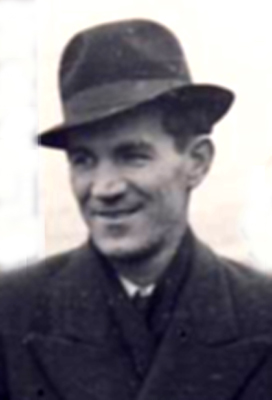
Constantin Doncea was a Romanian communist activist and politician. A railway worker, he played an important part in the Grivița Strike of 1933. Subsequently, imprisoned, he escaped and ended up in Moscow. He then joined the International Brigades during the Spanish Civil War. After spending much of World War II in the Soviet Union, he returned to Romania, where he helped establish a Communist regime. Doncea held a series of posts under the new order, but in 1958 he was removed from the party after clashing with its leader Gheorghe Gheorghiu-Dej. In his later years, he was rehabilitated by the latter's successor, Nicolae Ceaușescu.

Vasile Patilineț was a Romanian communist activist, politician and diplomat. A worker and native of the industrial Jiu Valley, he joined the Romanian Communist Party in 1945 and steadily rose through its ranks, entering the central committee a decade later. Subsequently, he became a close ally of Nicolae Ceaușescu, whose rise to power in 1965 he helped facilitate. A significant player in the early years of the latter's rule, he became steadily alarmed by the dictator's excesses and began plotting against him by the late 1970s. He was sent as ambassador to Turkey in 1980, and six years later, upon finishing his service at Ankara, was killed in a suspicious car accident.
Events from the year 1961 in Romania. The year saw the creation of the title of President of the State Council for the de facto head of state. The first office holder was Gheorghe Gheorghiu-Dej, who was already General Secretary of the Romanian Communist Party.
Events from the year 1962 in Romania. The year saw the end of the collectivization of agriculture and increasing de-satellization of Communist Romania as the country last publicly supported the Soviet Union against China and took part is Warsaw Pact army exercises.
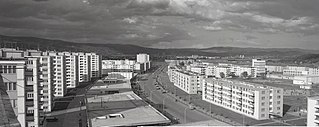
This is a list of 1965 events that occurred in the Socialist Republic of Romania.
This is a list of 1967 events that occurred in the Socialist Republic of Romania.

Dumitru Petrescu, believed to have been born Gheorghe M. Dumitru, also known as Gheorghe Petrescu and Petrescu-Grivița, was a Romanian general, trade union leader, and Communist Party (PCR) activist. After training as a metalworker in Grivița, he took to left-wing politics, joining the underground communist groups at some point before the railwaymen's strike of February 1933, which he helped organise together with Constantin Doncea and Gheorghe Vasilichi. Arrested by the Romanian Kingdom authorities in its wake, he received a 15-year prison sentence. He broke out of Craiova penitentiary a few months later, together with Vasilichi and Doncea, after overpowering a guard. With support from the International Red Aid, Petrescu made his way into Czechoslovakia, and then headed for the Soviet Union, where he lived until 1944. He worked in publishing and trained as a propagandist at the International Lenin School in Moscow.